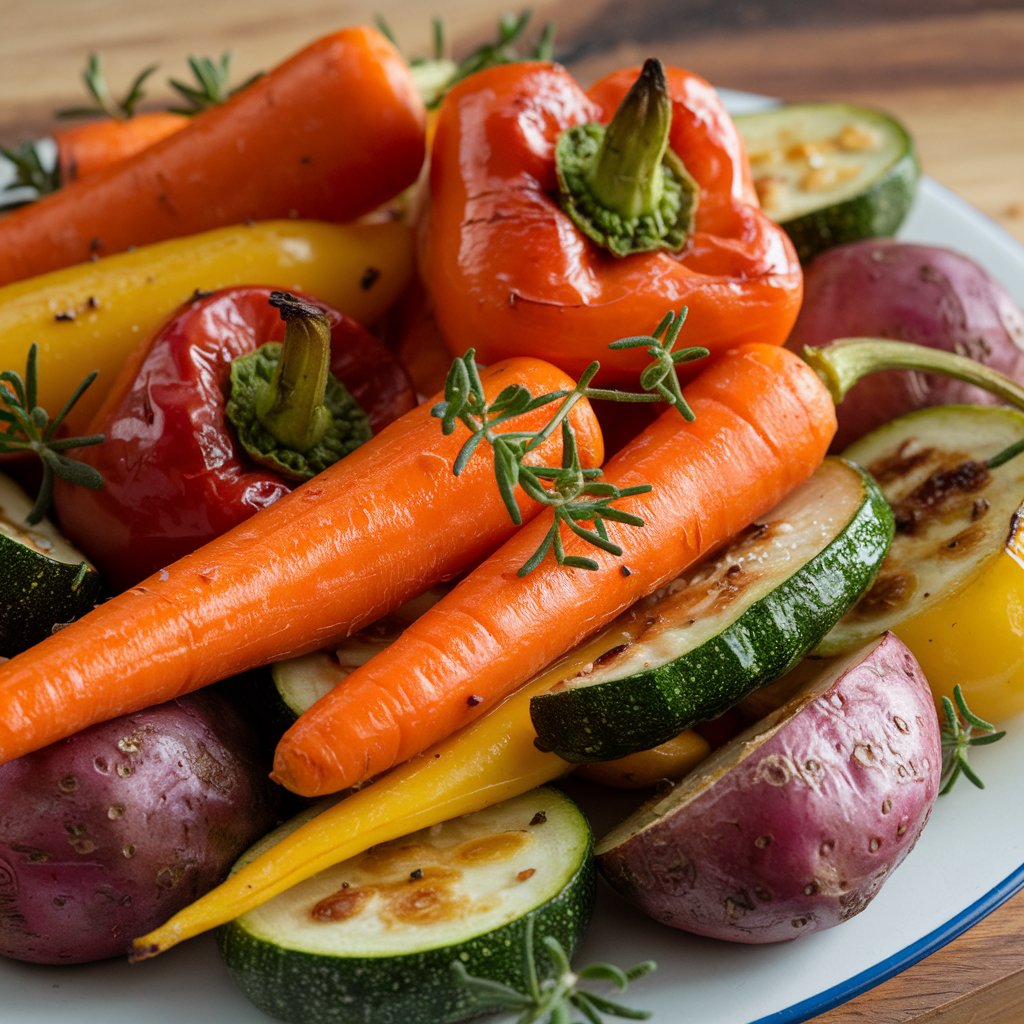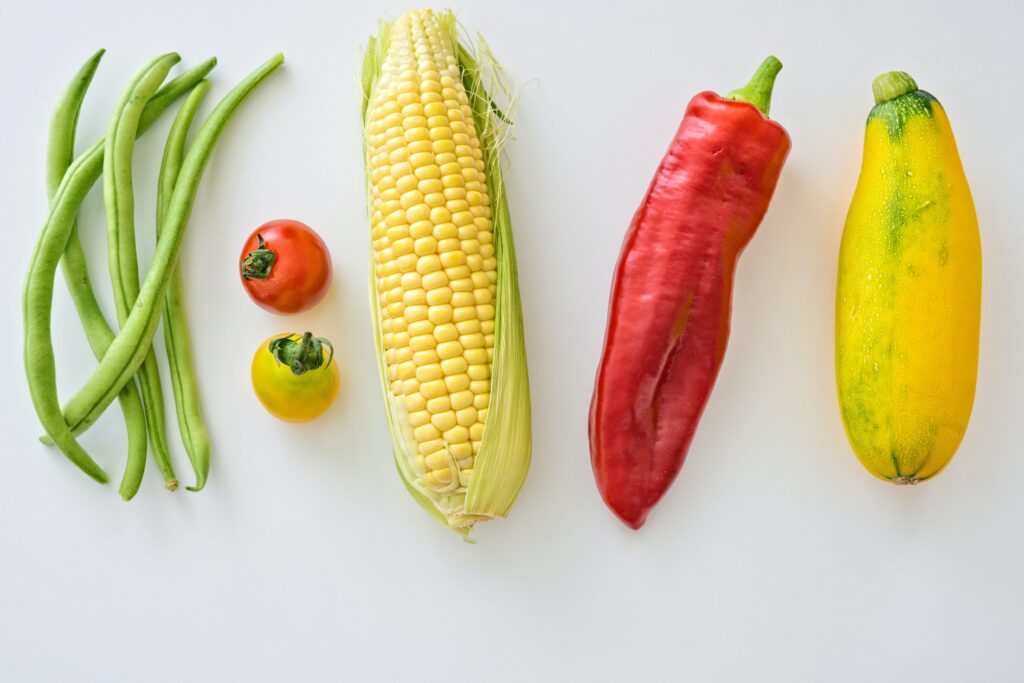Introduction
Vegetables provide a multitude of tastes, textures, and nutrients, making them the foundation of a nutritious diet. It takes careful consideration in the selection, preparation, and cooking of ingredients to produce a tasty vegetable recipe, which may be both an art and a science. Everything you need to know to prepare a delicious vegetable dish that will satisfy even the pickiest eaters will be covered in this guide.
Selecting the Right Vegetables
Picking the appropriate veggies is the first step in making a vegetable recipe that will stand out. Quality and freshness are key considerations. Here are some suggestions for selecting the greatest veggies:
Seasonality:
Choose seasonal vegetables whenever possible. They are typically more delicious, fresher, and more reasonably priced. Asparagus and peas, for instance, are excellent in the spring, but root vegetables like beets and carrots are best in the winter.
Color and Firmness:
Seek for strong textures and vivid hues. Steer clear of veggies that have soft patches, blemishes, or bruises.
Organic vs. Conventional:
Vegetables cultivated organically are healthier since they are grown without the use of artificial fertilizers and pesticides, even though they may cost more. Conventionally farmed veggies can still be utilized successfully in recipes and are still healthful.
Preparing Vegetables
The key to bringing out the most in your vegetables is proper preparation. Here are a few crucial methods of preparation:
Washing:
Wash every vegetable well under cold running water to get rid of any dirt or pesticide residue. For root veggies, use a vegetable brush.
Peeling and Trimming:
If needed, peel veggies like potatoes and carrots and cut off any bits that aren’t edible, such the bell pepper cores or the ends of green beans.
Cutting and Slicing:
The texture and cooking time of your veggies can be influenced by how you cut them. Even cooking is ensured by uniform pieces. For speedier cooking, slice carrots thinly, or dice onions to use as a basis for stews and sautés.
Cooking Methods
Various cooking techniques can enhance the distinct flavors and textures found in vegetables. Here are a few well-liked techniques:
Sautéing:
Flavoring veggies quickly and simply is accomplished by sautéing them in a modest bit of oil or butter over medium-high heat. Vegetables including bell peppers, onions, and zucchini are frequently sautéed. To improve the flavor, add spices, garlic, or herbs.
Roasting:
Vegetables take on a deep, delicious flavor when they are roasted in the oven because their natural sugars caramelize. Heat the oven to 400°F (200°C). Combine broccoli, cauliflower, and Brussels sprouts with olive oil, season with salt and pepper, and bake for 20 to 30 minutes, or until they are soft and browned.
Steaming:
Vegetables retain their original flavors and minerals when steamed. Steam vegetables such as carrots, asparagus, and green beans for 5 to 10 minutes, or until they are just soft, using a steaming basket over boiling water.
Grilling:
Vegetables that are grilled receive beautiful char marks and a smokey flavor. After lightly oiling the vegetables, place them on a medium-high heat grill pan or outdoor grill. Bell peppers, mushrooms, and eggplant are excellent grilling options.
Blanching:
Blanching is the technique of briefly boiling vegetables and then immediately cooling them off in ice water. This method works well for veggies like broccoli and green beans that you want to keep their crisp texture and vibrant color.
Enhancing Flavors
A basic vegetable dish can be made even better with the addition of extra ingredients and seasonings. Here are some suggestions:
Herbs and Spices:
A burst of freshness is added by using fresh herbs like parsley, cilantro, and basil. Complexity and depth are added by using dried spices like turmeric, paprika, and cumin. Try out several combinations to determine which flavors you prefer.
Aromatics:
Essential aromatics like onions, garlic, ginger, and shallots provide the foundation for many veggie recipes’ flavor. To enhance their tastes to the recipe, sauté them in oil before adding other veggies.
Acid:
Vegetable dishes might benefit from a dash of vinegar or citrus juice to enhance their flavors. Popular options include lime juice, lemon juice, and balsamic vinegar.
Fats:
Vegetables taste and feel better when flavored and oiled with healthy fats like avocado, coconut, and olive oils. Use them sparingly so as not to overwhelm the dish.
Umami Boosters:
Umami is the savory depth that is added by ingredients like soy sauce, miso, and nutritional yeast. These work especially well in cuisines that call for vegetarian or vegan ingredients.
A Sample Vegetable Recipe: Roasted Vegetable Medley

Ingredients:
One big sliced red bell pepper
Sliced one medium zucchini, one medium yellow squash, one large carrot, one tiny red onion cut into wedges, and one peeled and sliced carrot
two cups florets of broccoli
Three teaspoons of olive oil
One tsp salt
half a teaspoon of pepper, black
A single tsp of dried thyme
One tsp of dehydrated rosemary
half a teaspoon of powdered garlic
One-third cup balsamic vinegar
Instructions:
Preheat the Oven:
Set oven temperature to 400°F, or 200°C.
Prepare the Vegetables:
Clean and chop all the veggies according to the recipe.
Season the Vegetables:
Add the bell pepper, zucchini, yellow squash, carrot, red onion, and broccoli to a large mixing basin. Olive oil should be drizzled on, and then salt, pepper, thyme, rosemary, and garlic powder should be sprinkled on. For an even coat, toss.
Roast the Vegetables:
Arrange the veggies on a baking pan so they are in a single layer. Roast, tossing occasionally, in the preheated oven for 20 to 25 minutes, or until the veggies are soft and beginning to caramelize.
Finish and Serve:
After taking the veggies out of the oven, sprinkle them with balsamic vinegar. Toss to coat, then serve right away.
Tips for Perfect Vegetable Dishes
Do Not Overcrowd:
Make sure the vegetables are not packed too tightly and are in a single layer while roasting or sautéing. This keeps food from boiling and promotes even cooking.
Season Generously:
A generous amount of seasoning is appropriate for vegetables. Throughout the cooking process, taste and make any required adjustments.
Mix Textures and Flavors:
It is possible to make a dish that is more intriguing and fulfilling by combining different veggies with varied textures and flavors.
Use High Heat:
High heat helps the vegetables caramelize and bring forth their inherent sweetness when roasting or grilling.
Finish with Fresh Herbs:
Add Fresh Herbs at the End: Adding fresh herbs at the end of cooking helps to maintain their vivid color and flavor.
Pairing Vegetable Dishes
You can eat vegetable dishes by themselves or as a component of a bigger meal. Here are some ideas for pairings:
With Grains:
For a substantial, healthful dinner, serve roasted veggies over couscous, brown rice, or quinoa.
With Protein:
Match with tofu, fish, or grilled chicken for a well-rounded and nourishing meal.
In Salads:
For a delicious salad, combine grilled or roasted veggies with lush greens, cheese, and nuts.
As a Side Dish:
Serve a colorful vegetable medley alongside main dishes like spaghetti, meat, or casseroles.
Conclusion
The best ingredients must be chosen, carefully prepared, and cooked using the appropriate methods to bring out the best flavors in a recipe for tasty vegetables. You may make a range of filling and healthy dinners by increasing flavors with herbs, spices, and other seasonings and serving your veggie dishes with foods that go well together. Make the most of the amazing world of veggies with these tips and techniques, regardless of your level of cooking experience.
From ingredient selection to serving, this guide offers a thorough examination of the vegetable recipe-making process to make sure you have all the knowledge required to produce a tasty and nourishing vegetable dish.


























































